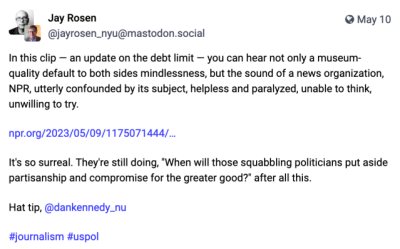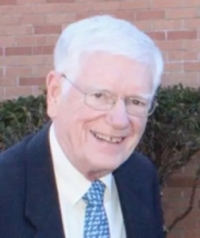
Back in January, The Washington Post was struggling, and publisher Fred Ryan had some difficult decisions to make. What he chose was to eliminate 20 newsroom positions and leave another 30 openings unfilled. Oh, and there was this: He decided (or, at the very least, agreed) to phase out Launcher, a Post vertical devoted to covering video games, and lay off the site’s five staff members.
At a time when the Post was fighting for ways to differentiate itself from its larger rival, The New York Times, Launcher should have been considered a key part of that strategy. Gaming is the largest entertainment medium, larger than movies and music combined. And Launcher was doing well. As editor Mike Hume tweeted, the move was “sad, upsetting, and perhaps most of all, mindboggling,” adding that Launcher had drawn “tens of millions of users, the majority first-time readers of The Post and almost all of them under the age of 40.”
Kat Bailey put it this way at IGN:
In the video game world, Launcher made a name for itself as a high-quality games media site with a focus on first-rate reporting, often taking the lead on difficult stories beyond the scope of the traditional enthusiast press. It stood out as one of the few examples of serious games reporting in a legacy newspaper, often landing major interviews and exclusives as a result.
It’s been obvious for quite some time that the Post needs a major reset. After years of growth, profits and what owner Jeff Bezos once called “swagger,” the paper has been stumbling since Donald Trump left the White House. Paid digital subscriptions are down from about 3 million to about 2.5 million, traffic to its website is on the wane, and the paper is losing money.
So it may have been met with a huge sigh of relief when Ryan announced Monday that he was stepping down as publisher and CEO. “I’m deeply grateful to Fred for his leadership and for the friendship that we’ve developed over the years,” Bezos wrote, according to an account of Ryan’s departure in The Wall Street Journal. Ryan told the staff in a note: “Together, we have accomplished one of the most extraordinary transformations in modern media history. We have evolved from a primarily local print newspaper to become a global digital publication.”
I didn’t interview Ryan when I was reporting on the Post’s revival in 2015 and ’16 for my book “The Return of the Moguls.” (I didn’t interview Bezos, either, but that’s a long story involving emails, snail mail and phone calls. Suffice to say he doesn’t give interviews to anyone, even the Post.) I spoke with then-executive editor Marty Baron and then-chief technologist Shailesh Prakash, who were leading the Post’s revival. I made a few attempts to connect with Ryan, but it didn’t happen. In any case, Baron and Prakash were the ones who were doing the transformational work.
So I was fascinated with Charlotte Klein’s account of the Post’s decline in Vanity Fair earlier this year. Bezos had paid a rare visit to the Post, and everyone was wondering what it all meant. At the time, it seemed like Ryan was feeling empowered with legends like Baron and Prakash having moved on. There was even talk that Baron’s replacement, Sally Buzbee, was musing with her inner circle that she might leave if Ryan didn’t stay in his lane. But in reporting on Ryan’s departure Monday, Klein writes that Buzbee had smoothed things over in recent months even as Bezos has been a more visible presence.
“Bezos, I’m told, has brought refreshing candor to the discussions, in which he’s asked about things like the Post’s paywall strategy and, notably, plan for growing subscriptions,” Klein writes. “At times, he sharply questioned Ryan, one of the sources said.”
For now, the Post will be led by an interim CEO, Patty Stonesifer, former CEO of the Bill & Melinda Gates Foundation. The way forward is not clear at all. Being just like the Times, only smaller and not as good, is not a business strategy. The Post is still a great newspaper, rivaled only by the Times and The Wall Street Journal. But it needs to find its own identify, as the Journal has with an emphasis on business news and a right-wing editorial page. (I’m not suggesting that the Post emulate the Journal’s opinion section; the Post’s is bad enough already.)
More than anything, the Post needs to identify coverage areas that the Times has ignored and doesn’t seem to be interested in. Like, you know, video games. Did I mention that it’s the largest entertainment medium in the country, and that Launcher was bringing in tens of millions of young readers before the Post decided to shut it down? Yes. Yes, I did.






